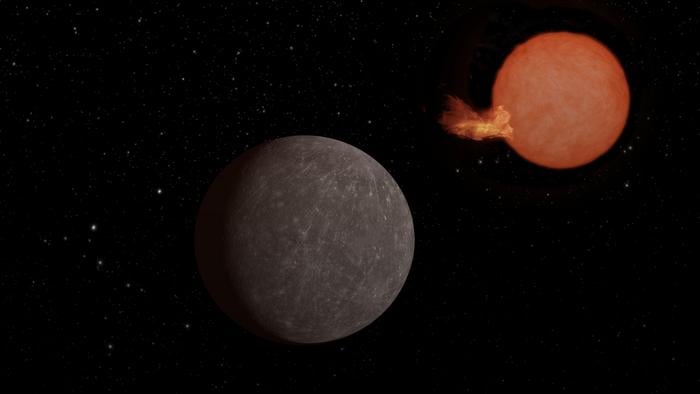In the vast expanse of the cosmos, a new discovery has been made by the SPECULOOS project, led by astronomer Michaël Gillon from the University of Liège.
The international team of astronomers has detected a new Earth-sized exoplanet orbiting SPECULOOS-3, an “ultracool dwarf” star located a mere 55 light-years from Earth. This remarkable finding marks the second planetary system discovered around this type of star, following the famous TRAPPIST-1 system.
Ultra-cool dwarf stars, the least massive stars in our Universe, are similar in size to Jupiter, more than twice as cold, ten times less massive, and a hundred times less luminous than our Sun. Despite their abundance in the Milky Way, these stars remain poorly understood due to their low luminosity, and little is known about their planetary companions.
A Unique and Fascinating World
SPECULOOS-3 b, the newly discovered exoplanet, is practically the same size as Earth and completes an orbit around its star in just 17 hours. The planet is likely tidally locked, meaning that the same side, dubbed the “dayside,” always faces the star, similar to how the Moon orbits Earth. Consequently, days and nights on SPECULOOS-3 b are endless, with the night side perpetually shrouded in darkness.
The host star, SPECULOOS-3, is more than twice as cold as our Sun, with an average temperature of around 2,600°C. Due to its extremely close orbit, the planet receives nearly sixteen times more energy per second than Earth does from the Sun, subjecting it to intense bombardment by high-energy radiation. This hostile environment makes the presence of an atmosphere highly unlikely, according to Julien de Wit, MIT professor and co-director of the SPECULOOS Northern Observatory.
A Window into the Future of Exoplanet Research
The discovery of SPECULOOS-3 b demonstrates the effectiveness of the SPECULOOS project in detecting Earth-sized exoplanets suitable for detailed study. The project, jointly run by the Universities of Liège, Cambridge, Birmingham, Berne, MIT, and ETH Zürich, employs a dedicated network of professional robotic telescopes to observe nearby ultra-cool dwarf stars one by one over weeks, maximizing the chances of detecting transiting planets.
The absence of an atmosphere on SPECULOOS-3 b could prove advantageous, enabling researchers to learn more about ultra-cool dwarf stars and paving the way for in-depth studies of their potentially habitable planets. The planet is an excellent target for the upcoming James Webb Space Telescope (JWST), set to launch in 2021, which could revolutionize our understanding of the Universe and even allow for the study of the planet’s surface mineralogy.
As the SPECULOOS project continues to expand, with the addition of two new telescopes, Orion and Apollo, joining Artemis on the Teide volcano plateau in Tenerife, the hunt for these fascinating planets is set to accelerate. This discovery marks just the beginning of a new era in exoplanet research, as astronomers continue to unravel the mysteries of the Universe and search for potentially habitable worlds beyond our solar system.
Keyword phrase: Earth-sized exoplanet ultra-cool dwarf star


